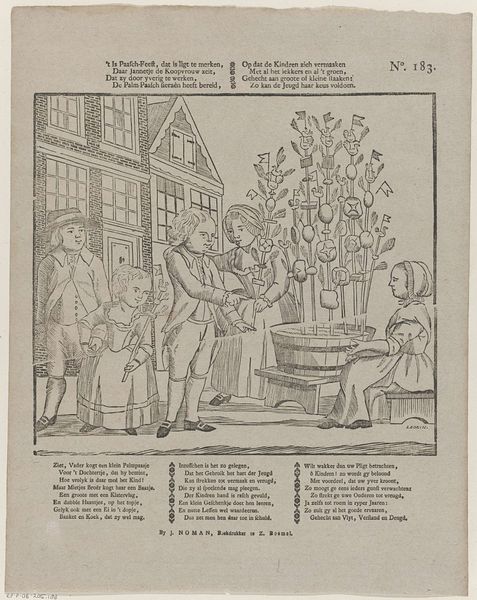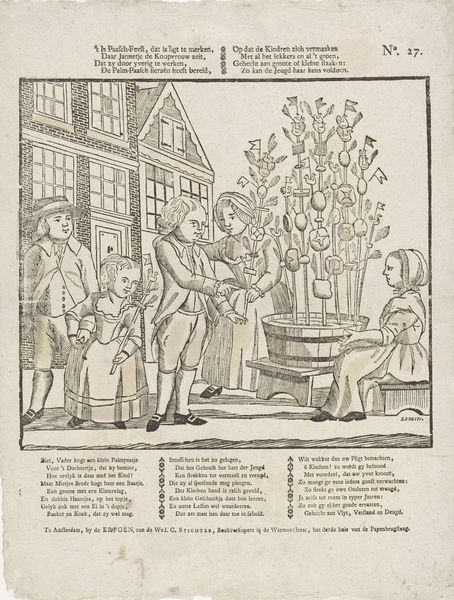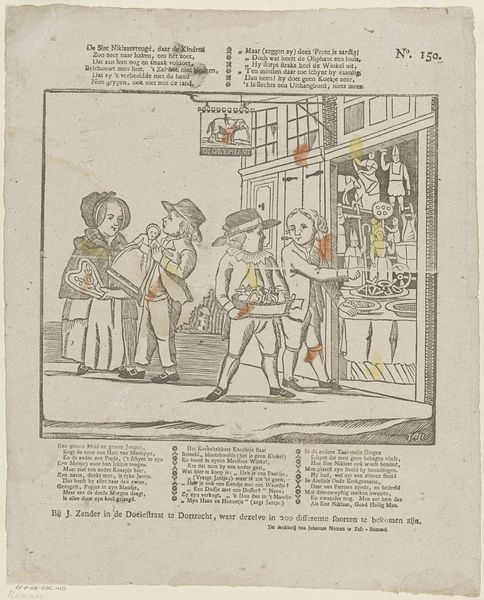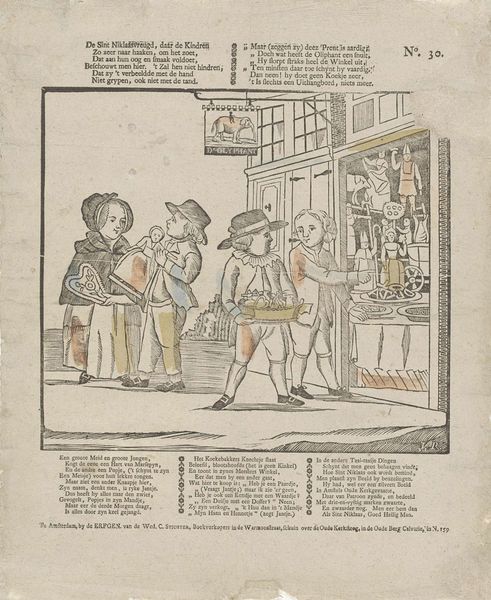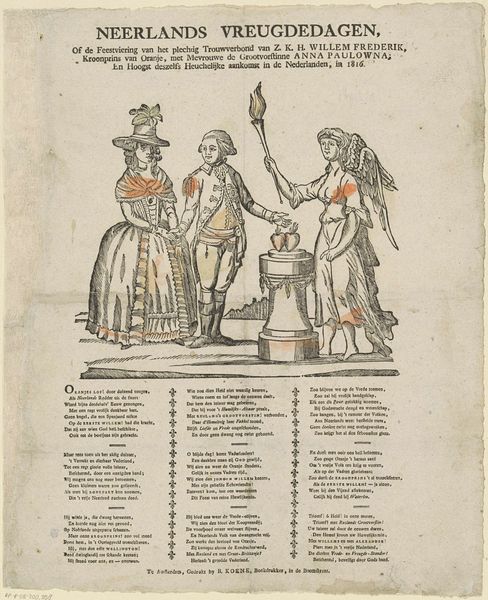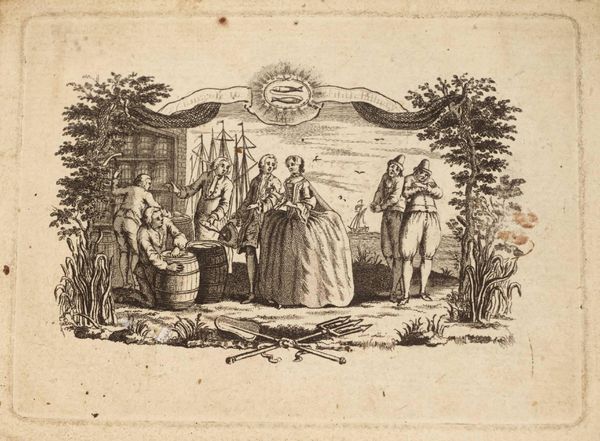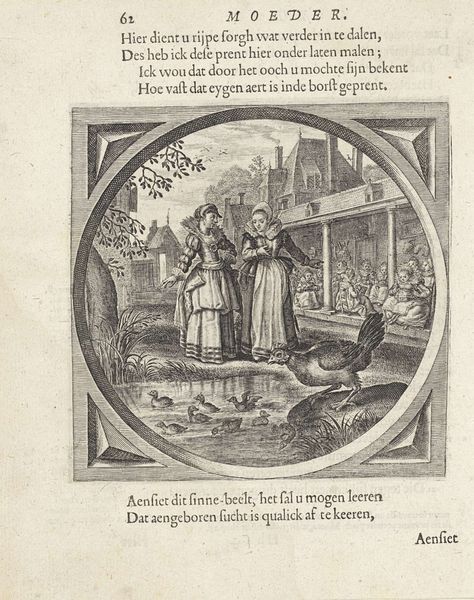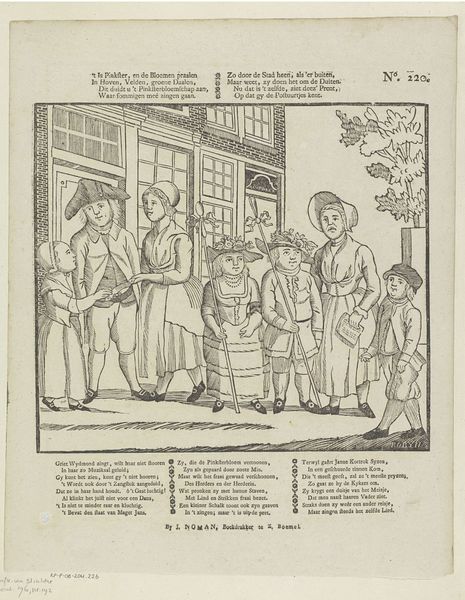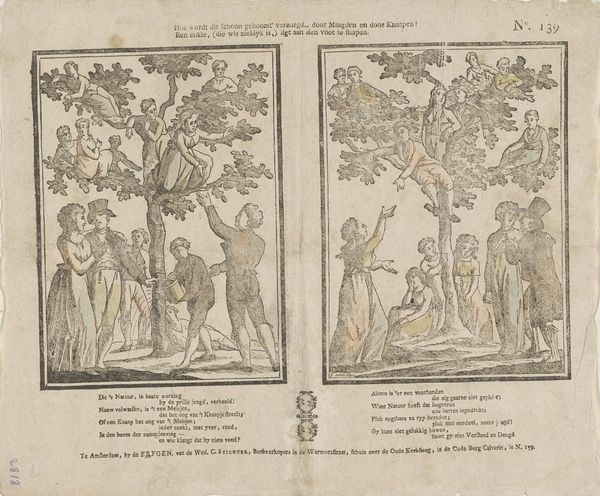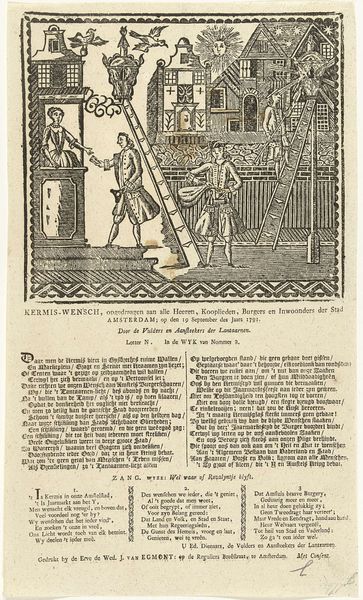
't is Paasch-feest, dat is ligt te merken, / Daar Jannetje de koopvrouw zeit (...) 1715 - 1813
0:00
0:00
print, engraving
# print
#
genre-painting
#
history-painting
#
engraving
Dimensions: height 390 mm, width 330 mm
Copyright: Rijks Museum: Open Domain
Curator: Here we have an engraving dating from between 1715 and 1813, titled "'t is Paasch-feest, dat is ligt te merken, / Daar Jannetje de koopvrouw zeit (...)." It's attributed to J. Robyn and currently resides in the Rijksmuseum. Editor: My first impression is that this is a wonderfully peculiar tableau! The light coloring suggests delicacy, yet the composition, with its hard architectural lines, feels quite rigid. It is not festive but stern somehow. Curator: Indeed. This work offers a window into the social customs surrounding Easter celebrations in the Dutch Republic. We see the preparation and sale of "Palm Paasch," which appear to be decorated branches or trees, likely with symbolic meaning relating to renewal and spring. It provides a snapshot of commerce and community traditions, highlighting Jannetje, the saleswoman, as a central figure in the ritual. Editor: Focus on that "Palm Paasch," though— the strange assembly of sticks, adorned with what seems to be sweets and small flags, arranged within a humble wooden container. Its structural oddity draws my attention. It reminds me of crude biomorphic assemblage using found elements in twentieth-century sculpture, yet with an air of 18th-century quaintness. Curator: It also emphasizes the social importance of satisfying youthful whims with commodities, teaching children consumer values within this context. There is that poem at the top describing what Janettje is making; beneath that is a poem for the adults, and two more for the youth, emphasizing various ethical dimensions for both young and old. Editor: See how Robyn juxtaposes those organic, almost unruly, branches against the ordered, grid-like facades of the buildings. This creates a visual tension, mirroring, perhaps, the tension between natural cycles and the ordered life of the city. Curator: Absolutely, it demonstrates how festive holidays integrate with regular socio-economic life. We might assume holidays are disruptive times but the poem on this piece explicitly advises moral virtue during times of feasting and rest. Editor: I come away with a renewed appreciation for how simple forms, even in a seemingly uncomplicated engraving, can provoke intricate considerations of culture and construction. Curator: It is a nice example of a very popular style of illustrated verse produced and distributed in Amsterdam from the late 17th century into the early 19th. These are primary historical documents providing all kinds of insights into day to day life in the Netherlands.
Comments
No comments
Be the first to comment and join the conversation on the ultimate creative platform.
